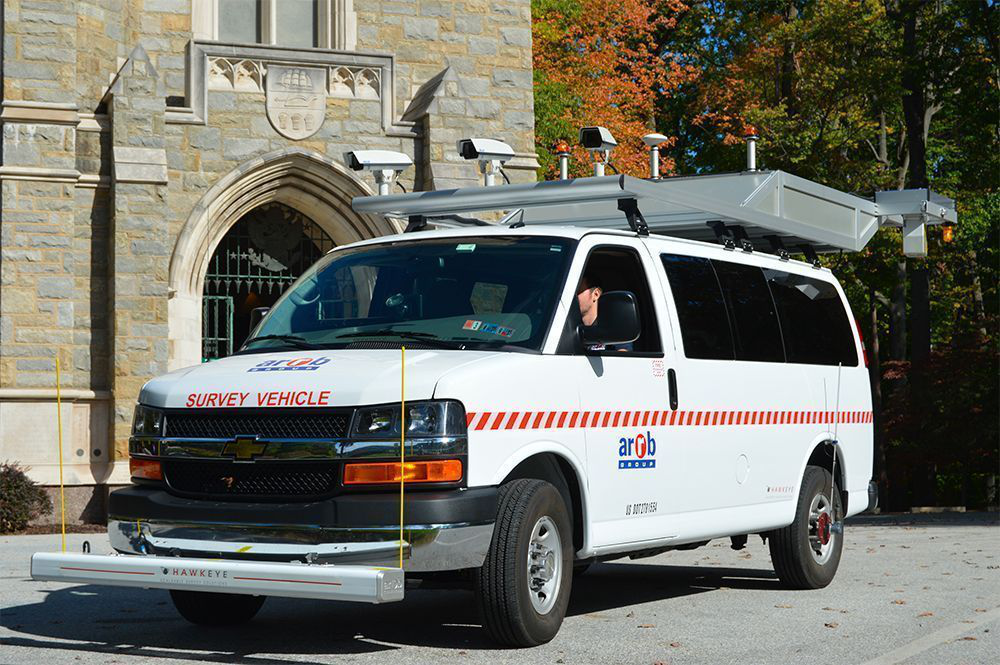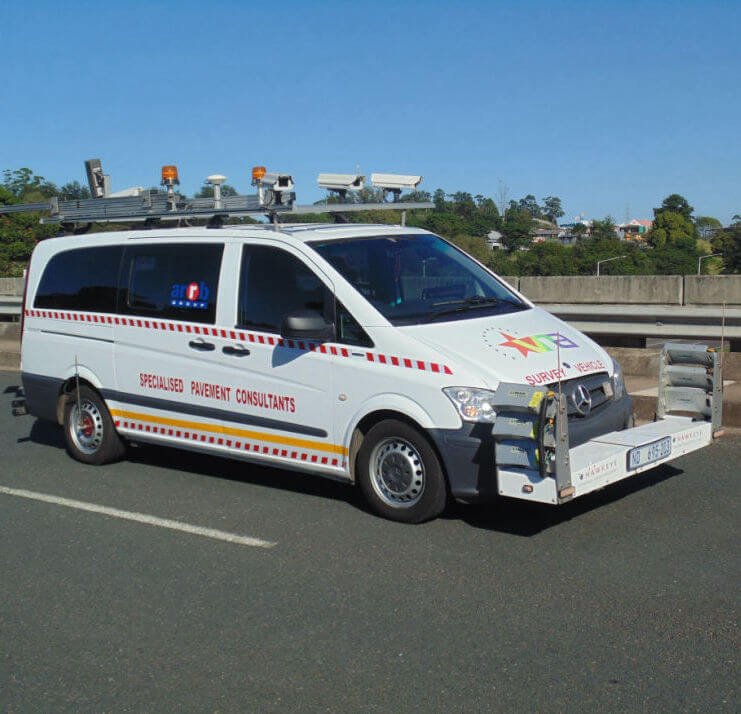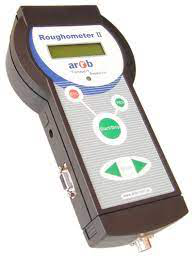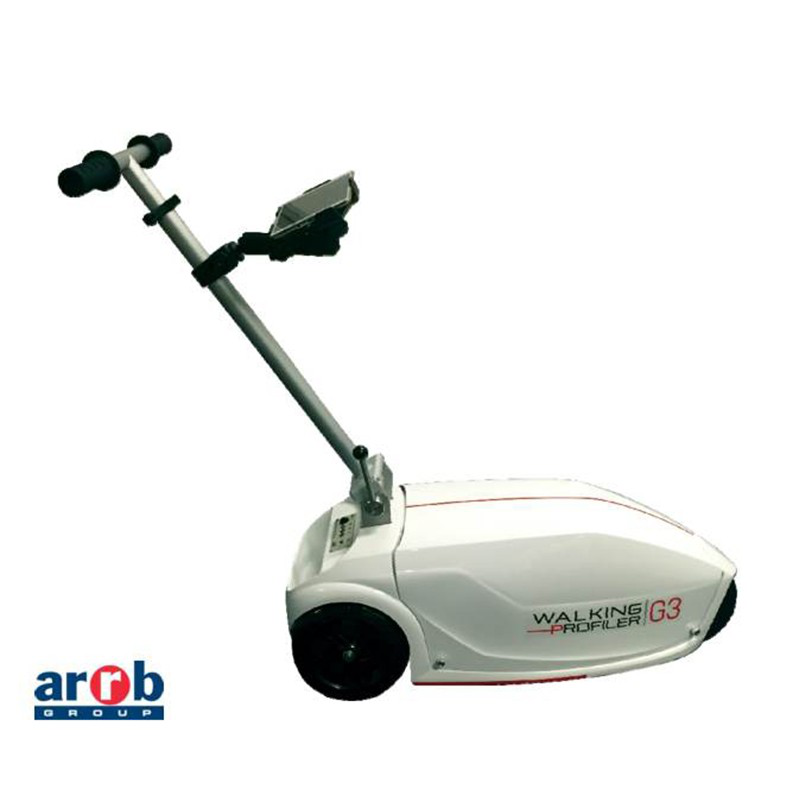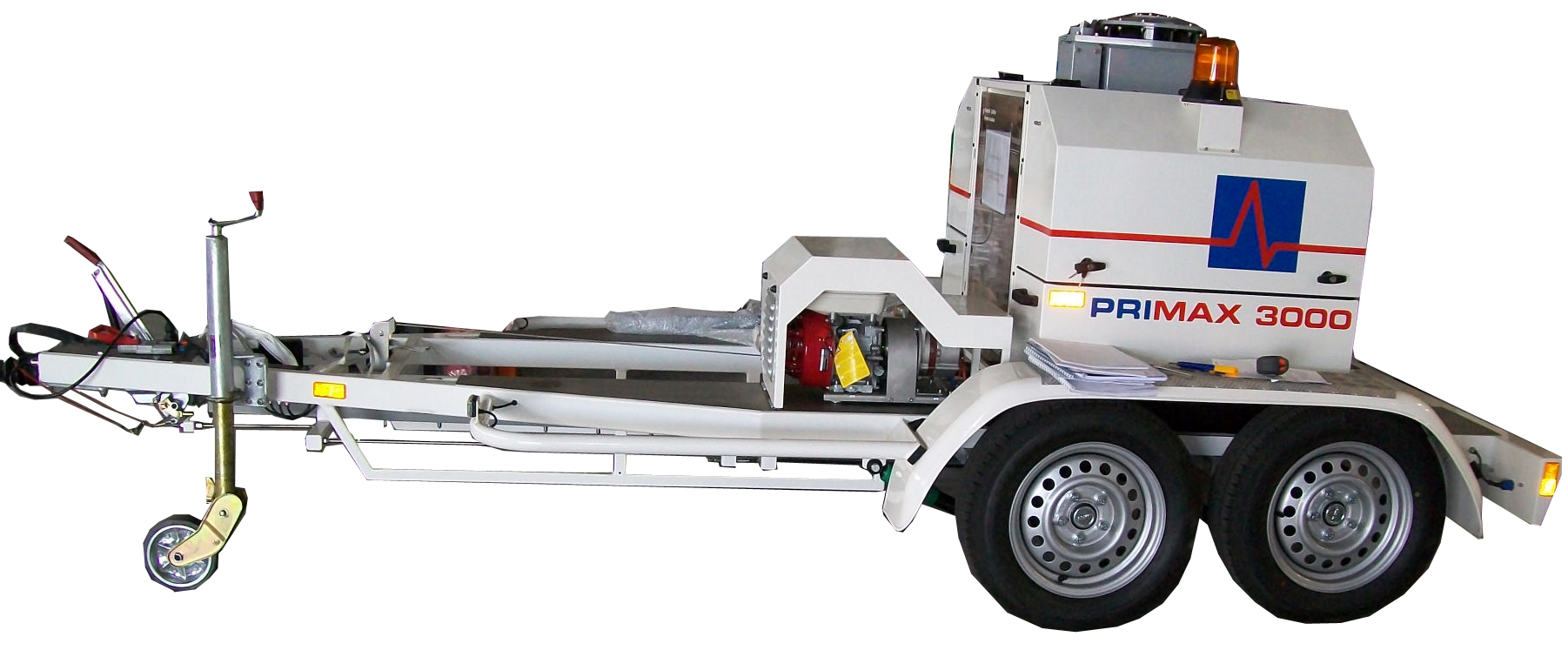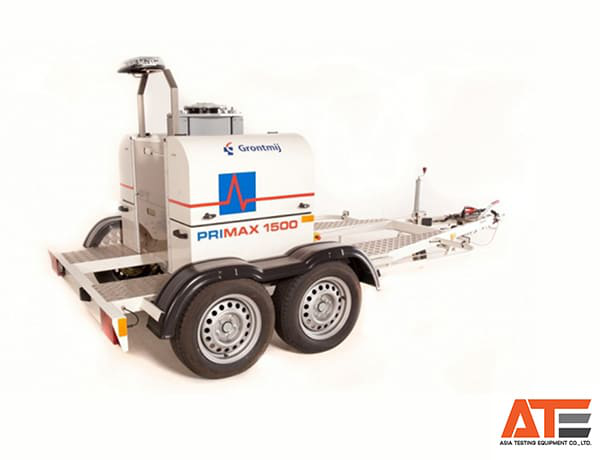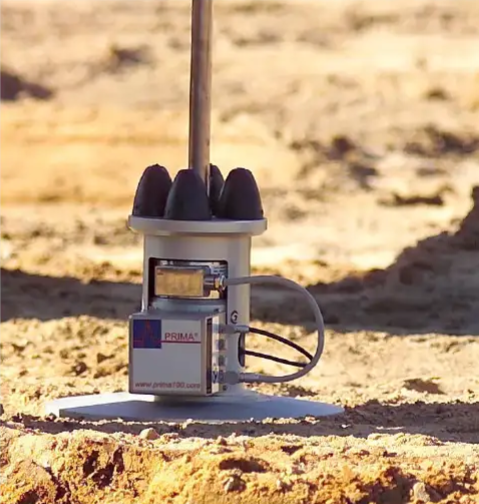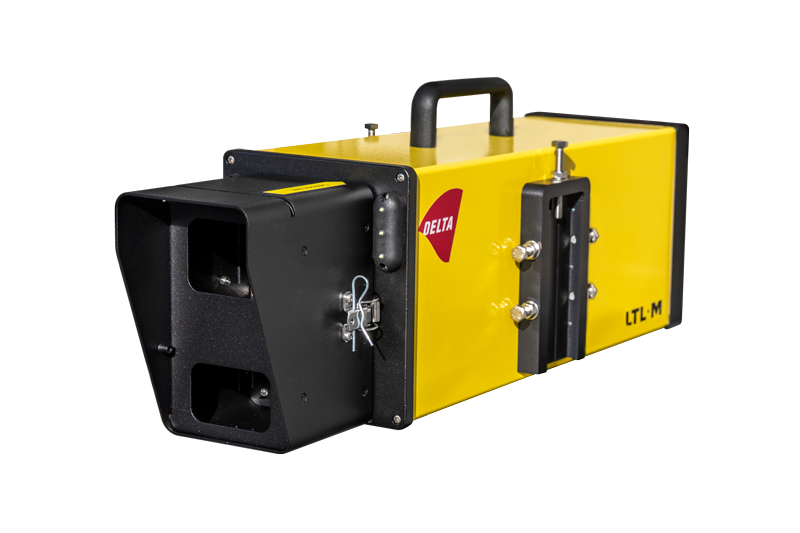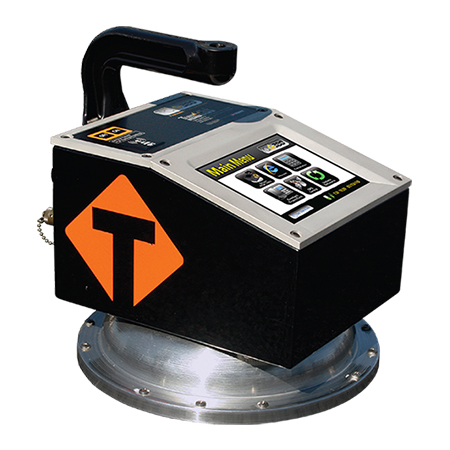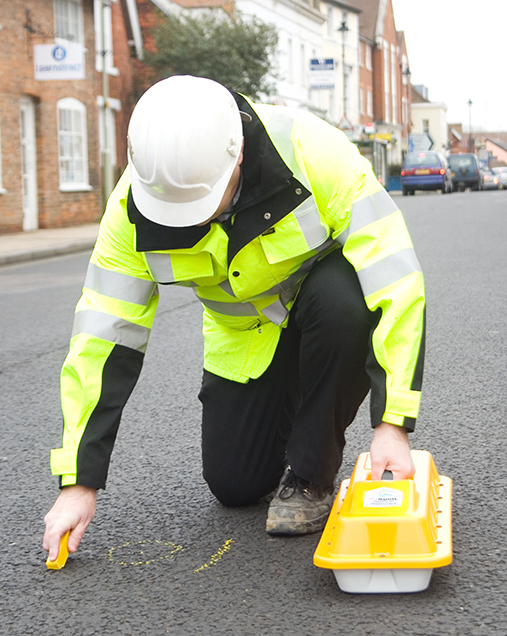Product (instrument) used under transportion circumstances.
Hawkeye 2000 Series
Introduction
The 2000 Series is a professional and highly specialised range of survey products designed to meet the most demanding survey applications. The modular design of the system enables complete scaleability for future growth and can be installed in a wide variety of vehicles due to its limited requirement of computer hardware. Once your requirements are established, simply customise the Hawkeye 2000 to meet your specifications. Combined with the Hawkeye range of acquisition and processing software, you have all the tools you need to make informed decisions about your network. Various Hawkeye 2000 modules are typically installed onto a dedicated Network Survey Vehicle (NSV). The type of vehicle used as the NSV is entirely the client's choice and is commonly dictated by specific requirements of the project, end user and location the vehicle will be operated in.
Applications
- network and project level road and asset collection surveys
- routine pavement monitoring surveys
- roadside inventory and asset management
- road geometry and mapping surveys
- contractor quality control
- road safety assessment
- airport runway maintenance
Hawkeye 1000 Series
Introduction
The 1000 Series provides a selection of portable products designed to
offer economical, portable solutions for road profiling and video
data collection. The low cost of the 1000 Series and the fit for
purpose specifications, make it an ideal solution for both video and
road profiling applications. Most importantly, the 1000 Series is
fully compatible with other Hawkeye products, enabling full data
integration across the entire range. The Hawkeye 1000 range consists
of:
a) H1000 Digital Laser Profiler .
b) H1000 Digital Imaging
System .
c) H1000 DUO
Applications
- routine pavement monitoring surveys
- roadside inventory and asset management
- contractor quality control
- road safety assessment
Roadmaster-IRI
Introduction
Range of Use:
Real Time live display of IRI / BI Value in the Laptop during survey. Roadmaster IRI-Tester is a device used
to measure road roughness, based on the IRI Measuring Principle developed by the World Bank. Roadmaster is a
separate device consisting of an accelerometer, an odometer or a pulse detector, the necessary electronics.
It is easily installed in practically any vehicle: a car, a van or a truck.
Roadmaster can be provided with a GPS device and the information on the location (latitude and longitude or
x-y- coordinates) can be saved together with the IRI values, if desired.
Measuring principle:
An accelerometer installed on the rear axle near Wheels (Two Wheel Path) measures its vertical acceleration.
By using double integration this is converted to vertical movements of the rear axle and thus to the
longitudinal profile of the road surface within certain wave lengths.
The longitudinal road profile is used as a input in the IRI equations. The driven length is measured from
the pulses from the speedometer electronics of the vehicle or in the case of a mechanical (wire) odometer a
special pulse detector is installed between the gear box and the odometer cable.
As a result, an IRI value is calculated for each 100m.
Roadmaster can be calibrated against the known road profile. In practice, we have found out that Roadmaster
results typically differ less than 5to10 % from an accelerometer-laser instrument-based Road Monitor System
which is used in Finland.
Technical Specifications
- Measuring speed: 40 to 100km/h
- Measuring interval: < 10cm. 100m (optionally 5, 10, 20m or custom interval)
- Data Storage Capacity: Depends on the PC Hard Disk, in practice > 50,000 kms
- Data sampling: < 2.5 cm
- Operational Speed: Depends on road and traffic conditions with a minimum speed of about 20 km/h
- Distance Measurements: Pulse detector (Odometer) installed on the wheel.
- OBD Reader for connecting to Electronic Odometer for distance pulses,
- Measurement Unit: Both Metric and Imperial values chosen by the operator.
- Roughness Sensor: Two Accelerometers sensors attached in the wheel suspension/Axle.
- Roughness Units: IRI & BI Units
- Roughness Accuracy: +- 0.5 mm/m
- Roughness Correction to True IRI: Yes
- Distance Accuracy: > 0.1 % with Odometer (Pulse detector),
- GPS System: Portable Magnetic Mounting on the roof,
- Accuracy: <- 15 m with WAAS,
- Rate: >= 1 Hz
- Standard Supply (Consists of the following items):
- Central Unit Box
- Two Accelerometer(s)
- One Odometer (Pulse Detector, DMI),
- OBD reader with cable (For connecting to Electronic Odometer for distance pulses)
- GPS Device (WAAS capability)
- Software in Pen Drive,
- Connecting Cables
- USB Cable from Central Unit Box to Laptop
- Power Cable from Central Unit Box to Vehicle 12V system Carry Case.
Roughometer IV
Introduction
The Roughometer IV continues a twenty year tradition of providing simple, portable and highly repeatable measurements of road roughness, on sealed and unsealed roads. The Roughometer 4 is a World Bank Class 3 responsetype device, measuring IRI directly from the axle movement using a precision accelerometer. This eliminates the uncertainties typically associated with other roughness response type meters or phone applications, such as the vehicle's suspension, or varying fuel and passenger weights. The unit utilises a wireless distance sensor and can be operated with most Android phones or tablets. Survey data is stored on the Android device, with the amount of collected data only limited by the storage capacity of that device.
Applications
- Provide objective data for true evaluation of the roughness level of the road.
- Objectively compare and analyse which roads are in need of maintenance and repair.
- Monitoring roughness deterioration trends on both sealed and unsealed roads.
Features
- Operated using two wireless buttons mounted on the vehicle dashboard.
- Wireless distance sensor, eliminating the need for wheel mounted devices. Optional externally mounted Distance Measurement Instrument (DMI) available.
- Utilises GPS functionality of Android device, with collected surveys displayed on a Google Maps interface.
- Multi-format reports available including KML and CSV files.
- Allows for MP3 voice recording of events.
Walking Profiler G3
Introduction
The Walking Profiler (WP) G3 produces outputs from longitudinal pavement profile, providing International Roughness Index (IRI), Mean Profile Depth (MPD) Macrotexture (as an optional parameter) and Distance. Differing from previous generations, the WP G3 utilises a tri-axial accelerometer mounted on a rolling platform, to enable rapid and continuous measurement of longitudinal profile. This platform is free-floating and independent to the supporting carriage, which means it is less susceptible to operator induced error. Data can be collected at variable speeds up to 5km/hr and is controlled by an Android tablet. Real-time results are displayed on the screen, in both tabulated and graphical form, allowing for on-site decision making.
Applications
- Provides outputs of IRI, longitudinal profile and distance.
- Reference tool for validating and assessing high speed profilers.
- Suitable for many surfaces, including paved roads and footpaths, airfields and runways, bridges and carparks.
Features
- World Bank Class 1 Profilometry device.
- Varying collection speed options.
- Optional laser for MPD texture measurement.
- Android tablet operation.
- Bluetooth connectivity.
- Outputs of .ERD and .PPF files, for use in ProVAL.
Falling Weight Deflectometers : LWDs for quality assurance
Introduction
Using a portable falling weight deflectometer, PRIMA 100 LWD, is the fastest, easiest and most secure way of bearing capacity determination and quality assurance of unbound layers. PRIMA 100 measures the surface modulus and presents results immediately to allow in-situ decisions.
Applications
-
Road construction:
216PE PRIMA226 Control of road base structures such as (sub)base, base layer gravel, recycled concrete, recycled asphalt, slag and crushed aggregate. Isotope measuring and Protor cannot be applied for recycled concrete and crushed aggregate. For this purpose PRIMA 100 is well suited, as static load bearing testing is slower and far more expensive. -
Ramps, parking spaces, terminals, etc.:
Control of base structures for ramps, approach areas near industrial buildings, freight terminals, stocks, parking spaces, harbour terminals, etc. -
Industrial flooring:
Control of base structures before concrete or asphalt paving in industrial buildings, stocks, etc. In the three cases above the employer's consultant controls the E modulus values, as the E moduli form the basis of the movement structure design. -
Excavations:
In connection with excavations and re-establishment of road areas etc. the E moduli are determined frequently in connection with the excavation work and when re-instating, compaction should reach the same modulus value. In this way differential settlements are avoided. -
Construction of interim haulroads for e.g. construction work and timber transports:
In connection with construction of interim haulroads for heavy loads, the bearing capacity is controlled during construction as the bearing capacity requirements can be very demanding in these cases. -
Construction with geogrids:
In connection with structures containing geogrids for reinforcement of the sublayer, the measurements will show, whether the geogrid has the expected effect.
In most cases determining E moduli is more relevant than measuring compaction degrees. This means that it is more relevant to use a light weight deflectometer than to perform isotope measurements or use laboratory determined Proctor density for comparisons. PRIMA 100 is the first portable equipment to offer measurement of in-situ E moduli. This has not possible with portable equipment in the past. Isotope and PRIMA 100 measurements are done equally rapidly, whereas Proctor results will not be ready before the day after the measurements were performed.
Falling Weight Deflectometers : PRIMAX Trailer-mounted FWD
Introduction
The PRIMAX FWD trailer is the classic and flexible solution from Grontmij, Pavement Consultants. Mounted on a double-axle trailer it is independent of the towing vehicle and can be towed by any vehicle. The only cable connecting the trailer with the towing vehicle is the PC computer cable. The operator controls all FWD functions from the PC, which is placed in the towing vehicle. This makes the measuring work simple and easy and only one operator is needed for the work.
Modular principle:
The modular principle means that there is no need for investment in new equipment if the demands on the equipment change. All that is necessary to upgrade the equipment from a standard 7-150 kN FWD to a 7-250 kN Heavy Weight Deflectometer (HWD) or even to a 7-350 kN Super Heavy Weight Deflectometer (Super HWD) is to add more weights, a larger load cell and upgrade software. The trailer-mounted FWD can also be integrated in a van without having to invest in new basic measuring equipment. Bil 20Mm Like all FWD equipment from Grontmij, the standard trailer-mounted FWD is supplied with:a) Personal computer
b) Windows FWD software
c) Time history module
d) Transport lock
e) DMI (Distance Meter Indicator) integrated in the software
f) Three temperature sensors
g) Four-split loading plate
h) 9 to 17 or more geophones
i) Warning lights
Additional functions can easily be added such as video or marking equipment, GPS (Geographic Positioning System), which allows presentation of data in maps or general plans on site.
Data processing:
For data processing Grontmij supplies RoSy DESIGN, a back-calculation software for both road and/or airport data analysis. However, files generated from the equipment can be applied in any other back-calculation program.Safe and reliable system:
Grontmij attaches great importance to supplying safe and stable equipment and the available newest technology forms the basis of the FWD equipment. The PRIMAX software incorporates alarms that are displayed on the computer screen. If the operator ignores vital warnings, certain functions cannot be performed with the FWD e.g. in connection with measurement of pavement temperature: After having inserted the asphalt temperature sensor in a hole in the pavement, the sensor registers when the temperature is stable. The temperature is measured while the loading plate is placed on the pavement and cannot be raised before the temperature sensor is placed in its holder. The equipment cannot be driven to another position with the loading plate lowered down and strategically placed emergency switches allow the operator to stop the equipment at any time while operating manually.PRIMAX Van-Integrated FWD
Introduction
The van-integrated PRIMAX FWD from Grontmij, Pavement Consultants is the solution when the equipment is used daily or very frequently. It is well suited for measuring in towns and densely populated areas, areas with a heavy traffic load or in areas where safe, accurate and quick manoeuvre is required, such as airports and when measuring concrete slabs. The van-integrated FWD equipment may be driven at normal driving pace and the clear and good view from the van while testing offers optimum road safety. VanThe FWD unit is well-protected in the van and leaves space for further equipment or even a small laboratory. Another possibility is to bring along the portable FWD, PRIMA 100 LWD. The combination of the traditional FWD equipment and the PRIMA 100 light FWD allows in-situ quality control in connection with rehabilitation of pavements or new constructions.
Modular design:
The modular principle means that there is no need for investment in new equipment if the demands on the equipment change. All that is necessary to upgrade the equipment from a standard 7-150 kN FWD to a 7-250 kN Heavy Weight Deflectometer (HWD) or even to a 7-350 kN Super Heavy Weight Deflectometer (Super HWD) is to add more weights, a larger load cell and upgrade software. Like all FWD equipment from Grontmij the standard van-integrated FWD is supplied with: a) Personal computer b) Windows FWD software c) Time history module d) Transport lock e) DMI (Distance Meter Indicator) integrated in the software f) Three temperature sensors g) Four-split loading plate h) From 9 to 17 or more geophones i) Warning lights j) Additional functions can easily be added such as video or marking equipment, GPS (Geographic Positioning System), which allows presentation of data in maps or general plans of site.Data processing:
For data processing Grontmij supplies RoSy DESIGN, a back-calculation software for both road and/or airport data analysis. However, files generated from the equipment can be applied in any other back-calculation program. Safe and reliable system: Grontmij attaches great importance to supplying safe and stable equipment and the available newest technology forms the basis of the FWD equipment. The PRIMAX software incorporates alarms that are displayed on the computer screen. If the operator ignores vital warnings, certain functions cannot be performed with the FWD e.g. in connection with measurement of pavement temperature. The equipment cannot be driven to another position with the loading plate lowered down and strategically placed emergency switches allow the operator to stop the equipment at any time while operating manually.LTL-M mobile retroreflectometer
Introduction
- Danish company Delta has unveiled its new LTL-M mobile retroreflectometer, which it says has taken about four years to develop.
- The unit, seen at the recent Traffex show in Birmingham, UK, measures all types of road markings at a simulated distance of 30m "with the highest level of accuracy." The company says that the LTL-M is to be used mounted on a vehicle measuring retroreflection at normal traffic speed providing full overview of the condition of the road markings.
- DELTA says the instrument operates with an accuracy of typically +/-5%, which is in line with DELTA's hand-held retroreflectometers LTL-2000, LTL-X and LTL-XL.
- It uses the latest camera and illumination technology, which results in high accuracy independent of changes in the geometry of the system through an automatic image process compensating for vehicle movements.
- Consisting of three units (the sensor mounted on the outside of the vehicle with camera, flashlight and GPS; processor inside the vehicle; and the graphical user interface/GUI Tablet PC placed next to the driver), the LTL-M was the subject of a study carried out by VTI, the Swedish National Road and Transport Research Institute. The results are reported in Evaluation of the LTL-M, Mobile measurement of road marking, compiled by Sven- Olof Lundkvist in 2010.
Non-Nuclear Pavement Quality Indicator (PQI 380)
Introduction
Introducing the next generation of TransTech Systems Non-Nuclear asphalt density gauge, the PQI 380. This version of the PQI is fully equipped with a touch screen and a user friendly graphical user interface. The PQI 380 uses Microsoft Windows CE for smooth operation, easy software upgrades and enhanced user support.
Some highlights of the PQI 380...
- Full Color VGA display
- LED backlight for easy visibility in light or dark situations
- Customizable Project Entries
- Customizable Mix Entries
- Diagnostics reading mode
- Data Management Screen and the ability to disable data logging
- Rugged, Lightweight, Aluminum Shell (Reflective vinyl graphics for safety)
- The PQI 380 also utilizes an advanced GPS system which enables position and independent time logging. A USB port enables the user to easily download data files in a comma delimited file and print out the data. The high capacity Nickel Metal Hydride rechargeable batteries are user replaceable. The easy to navigate user interface will ensure that you get setup quickly on jobs and begin taking reading in just seconds. The PQI 380 conforms to ASTM standard D7113 and AASHTO T 343-12.
Non-Nuclear Soil Density Gauge (SDG 200)
Introduction
Introducing the next generation of TransTech Systems Non-Nuclear soil density gauge, the SDG 200. This version of the SDG is fully equipped with a touch screen and a user friendly graphical user interface. The SDG 200 uses Microsoft Windows CE for smooth operation, easy software upgrades and enhanced user support.
Some highlights of the SDG 200...
- Full Color VGA display
- LED backlight for easy visibility in light or dark situations
- Customizable Project Entries
- Customizable Material Entries
- Diagnostics reading mode
- Data Management Screen and the ability to disable data logging
- Rugged, Lightweight, Aluminum Shell (Reflective vinyl graphics for safety)
- The SDG 200 also utilizes an advanced GPS system which enables position and independent time logging. A USB port enables the user to easily download data files in a comma delimited file and print out the data. The high capacity Nickel Metal Hydride rechargeable batteries are user replaceable. The easy to navigate user interface will ensure that you get setup quickly on jobs and begin taking reading in just seconds. The SDG 200 conforms to ASTM standard D7830.
E-spott - Spot testing for road and layered surfaces.
Introduction
The e-Spott is an advanced ground Probing radar system designed specifically to measure the total bound layer depth of roads and other layered surfaces. Once the operator has activated the system by pressing the one and only button, signals begin to be transmitted into the ground. These are reflected back to the surface from any discernable material change and automatic recognition software is applied to identify those signals returning from the first significant layer interface. At the same time advanced signal processing determines the velocity of propagation within the first subsurface level and translates this into the depth reading. This all happens within 10 seconds of pressing the button and the reading is displayed for a further 10 seconds, allowing the operator ample time to record it if required. Activation of any GPR system within the UK or EU is covered by regulation and in the UK a licence is also required. The nature of the materials normally used to form the surface and binder layer of a highway have little effect on the e-Spott allowing it to distinguish between these and the base layer by their electromagnetic properties. This is possible where there is a significant difference between them. The e-Spott system is a transmission device operating between 600MHz to 2.5GHz and conforms with all current European technical standards for GPR based devices and specifically EN 302 066-1. Similar regulations may exist in other locations.
T2GO Portable CFME
Introduction
Our new generation T2GO Continuous Friction Measuring Equipment measures friction on any surface - both dry and contaminated - in areas where large trailer or vehicle-based friction testers can't go. It is now even more precise and more portable thanks to an upgraded design and new features.
Applications
- New design and case makes it easier to collapse and transport.
- Now measures every 30 millimetres or 1/10 ft for more precise results.
- Measures according to established standards including ASTM and EN.
- Includes calibration equipment for quick, easy calibration in under five minutes.
- Optional integrated water system enables functional measuring of simulated wet conditions.
CFME T-5 Trailer Friction Tester
Introduction
The T-5 Trailer has been developed to enable us to offer our customers a complete product range within Surface Friction Measurement Equipment. The T-5 trailer is based around a modified version of the rear-axle found in our integrated friction testers.
Main Features
- The trailer built around the axle is relatively light, and weight is precisely distributed and this combined with a unique suspension system ensures balance, stability, good road handling and most importantly reliable and reproducible measuring results.
- T-5's design is slim and modern. It is made with fiber plastic material thus making it less sensitive to hazard material used in airports winter operations like de-icing etc.
- The transmission arm in the rear-axle of the T5 is using a belt drive instead of chains. This will result in less service need since there is no oil that needs to be replaced and no chains that can break and cause a major break down in the transmission arm.
- With T-5, ASFT has also introduced ASFT's New Generation Computer System to offer a completely new method to collect, store, view and trace not only friction data but also additional information such as Operator ID, GPS position, temperature (Ground and air), tire pressure, map-view, etc. For more information click here.
- Easy and quick calibration.
- FAA and ICAO approved.

